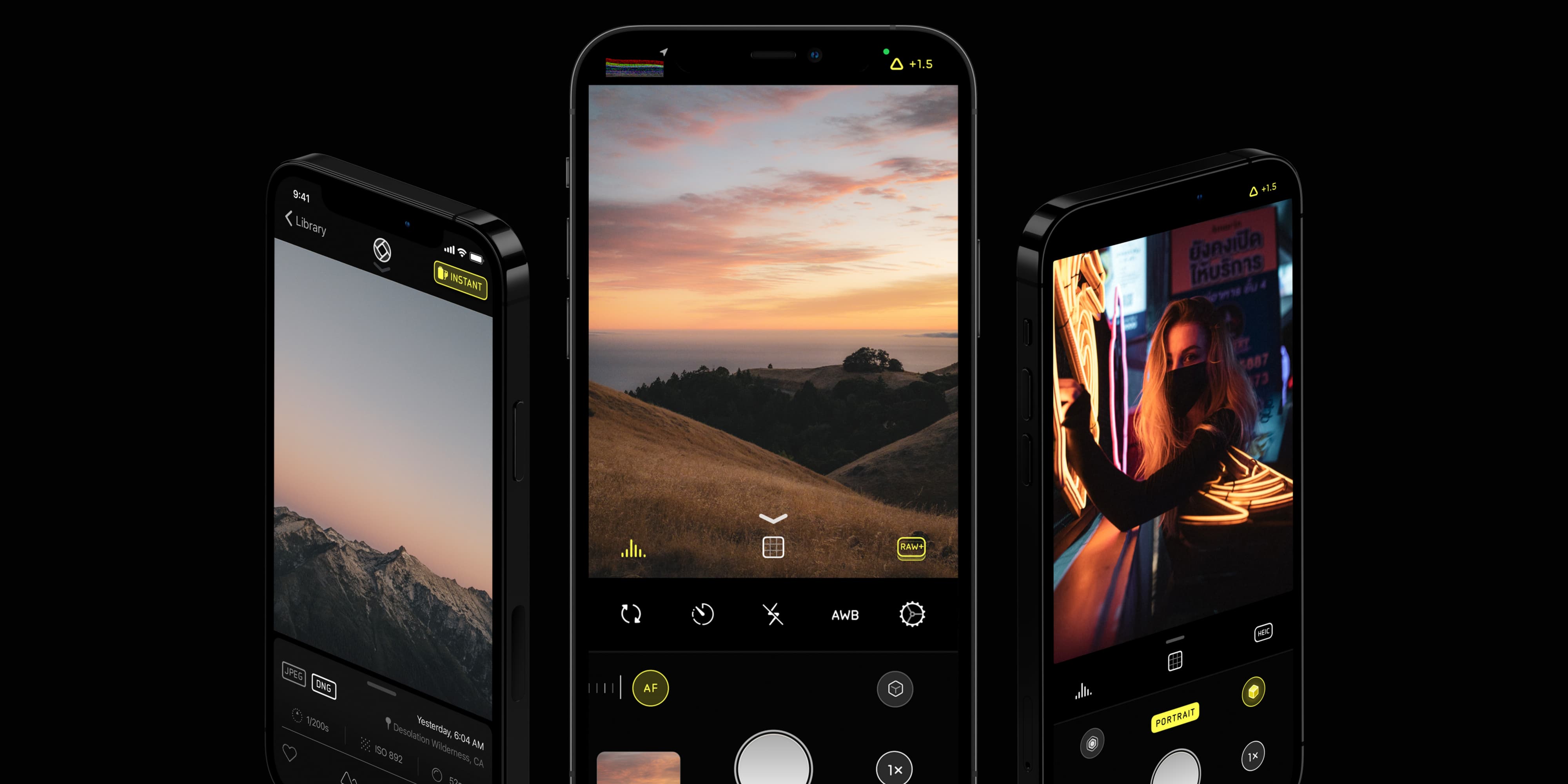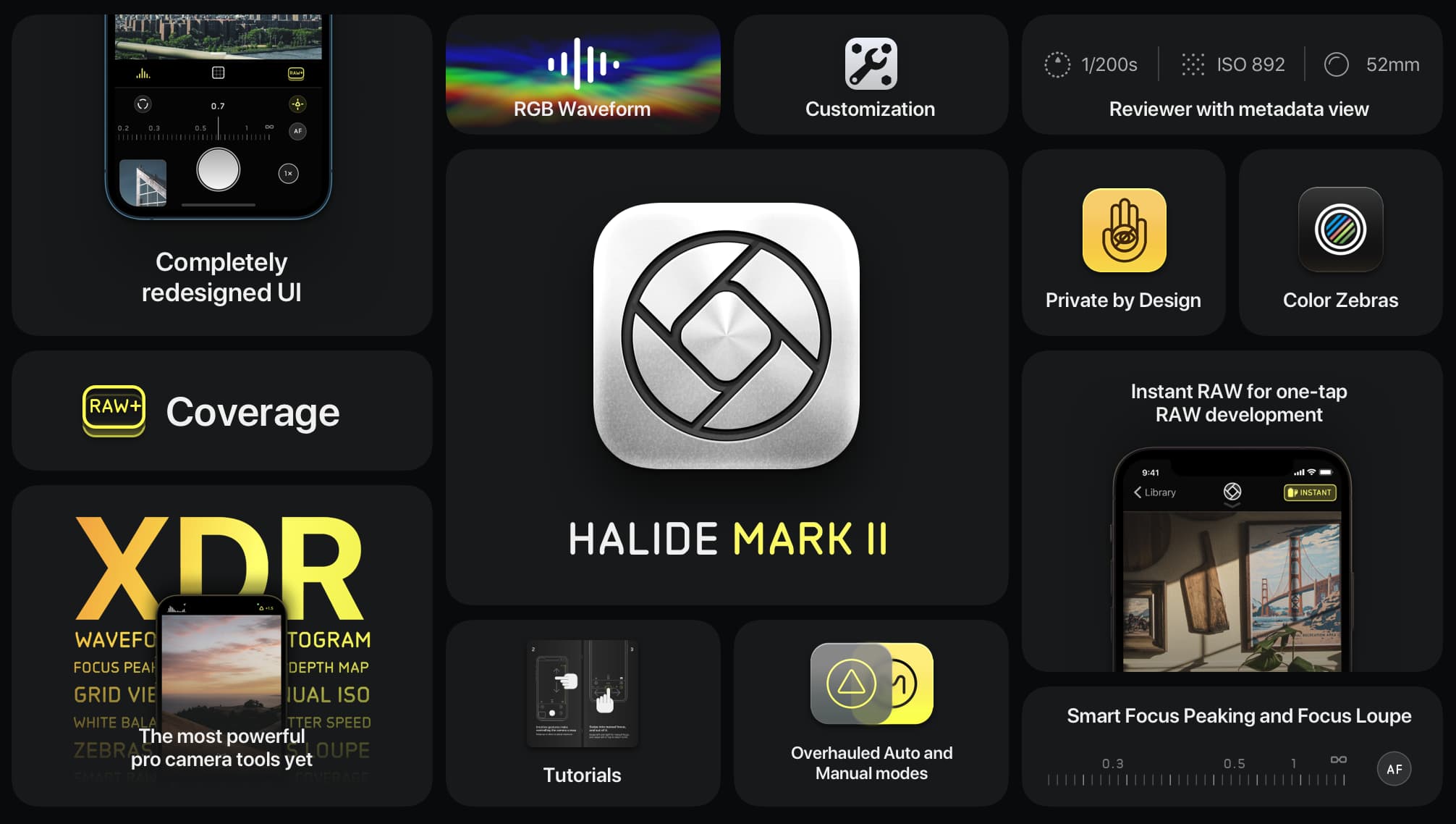
The camera system in Apple’s iPhone lineup is already impressive, but some photographers out there prefer a more in-depth app experience to get the shots they want. Halide, developed by Lux Optics, has been one of the go-to apps for years now, and now there’s a whole new, improved option.
Announced and released today, Halide Mark II improves upon the experience of the original Halide app so much that the developers re-launched the app with a new name. The app is free to download and try out, but its more impressive features are locked behind an in-app purchase. However, Halide Mark II, like the original app, is an impressive photography app right out of the gate, and can be immensely helpful in teaching new photographers the ropes.
Of course, it’s also a great resource for seasoned photographers, too.
There is a lot to go over, and I’m just going to skim the major announcements and features, so if you want to know more head over to Lux’s blog post on the new app. It goes over all of the new features with plenty of detail.
Coverage
This new feature is meant to take advantage of the features that Apple bakes into iOS, including Smart HDR 3 and Deep Fusion, while also capturing classic RAWs. This means you can snap a photo, or photos, using Apple’s computational photography features, but also keep the RAW format “in your back pocket” if you want to edit the image(s) on your own.
Mark II is the first camera to capture both classic RAWs and computational photos in one burst with a feature we call Coverage. Now you can take amazing photos that leverage all the advanced photography of the latest iPhones, while having a RAW in your back pocket in case you think you can do better.
We built Coverage through software-based bracketing, which unfortunately leaves a split-second delay between the RAW and processed images. Since this might confuse casual photographers, we leave Coverage off by default. You can enable it in “Capture Settings.”
You’ll see Coverage is enabled in your viewfinder when the RAW icon looks like a little stack.
RAW
Lux knows that RAW photo editing requires a lot of time and effort, and even some photographers that might want to dig into editing photos might not have time to do so. So making RAW photography accessible is one of the key factors of Halide Mark II. To get there, a new feature called Instant RAW:
Instant RAW develops your RAW file in one tap. Just like how Smart RAW helps Halide expose RAW correctly using Machine Learning, with Instant RAW Halide goes through a 17-step process of intelligently developing your file to get the best possible result. It’s optimized differently for different iPhones; it enhances detail and color; and above all, it’s neutral.
iPhone photos are increasingly intelligently processed: they are a result of many photos, merged, intelligently combined, enhanced and massaged. A RAW capture is a single shot. It makes for a very different look —and yes, it has grain, just like a film photo — but we think it’s beautiful.
Now, it’s worth noting that Apple also wants this to be something iPhone photographers can jump into, but with just the stock experience. With Apple’s ProRAW, which it introduced alongside the iPhone 12 lineup this year, Apple’s taking a similar road as Lux, as Apple describes it:
ProRAW gives you all the standard RAW information, along with the Apple image pipeline data. So you can get a head start on editing, with noise reduction and multiframe exposure adjustments already in place — and have more time to tweak color and white balance.
XDR
XDR Analysis is one of the biggest new features for Halide Mark II. Lux says it’s going to go into more detail in a later post, but it offers a few key details in today’s announcement. The short of it is that with this feature, the new photography app is 64x more accurate than a standard photo taken in other camera apps.
Halide is the first and only camera app that visualizes the full 14-bit RAW data in real time. We call this XDR Analysis. When RAW streaming is active, the zebras, waveform, and histogram is based on the real sensor data.
Why is this a big deal? We have a deep technical dive planned for the future, so today we’ll keep this short. Bits work in powers-of-two, so jumping from 8-bit to 14-bit means 64x more accuracy.
Which apparently took some shenanigans to pull off:
We’re not going to lie, this took a lot of shenanigans to get working. For performance and battery life, we only enable RAW streaming when interactively adjusting ISO or shutter speed. You’ll notice the moment it engages, as your exposure tools will suddenly shift to reveal the honest truth.
There’s so much more

The truth is, Lux has a lot to announce with Halide Mark II, and it’s absolutely worth a read. You can also just download the app right now from the App Store and give it a go for yourself. That includes overhauled Manual and Auto modes, new built-in tutorials to help build up your abilities, new customization tools, a new UI, and much, much more.
You can pay $29.99 up front to have access to all the app’s features forever, or you can pay $11.99 per year (it’s just $9.99 for the first year if you sign up today, at launch). But! If you purchased Halide then the upgrade to Halide Mark II is free:
After 18 months of work, we're excited to launch Halide Mark II.
Not just Halide's biggest update yet, but a whole new app.
If you're an existing user, this all-new app is… free. What?! Yep. Keep reading:https://t.co/9ul5384wyp pic.twitter.com/MMPEHKpcHV
— Halide (@halidecamera) October 22, 2020
Are you going to check out Halide Mark II?